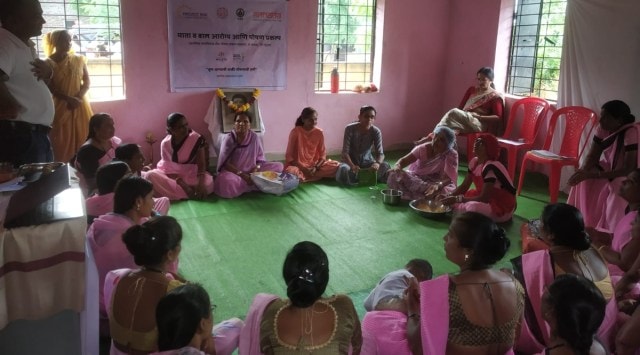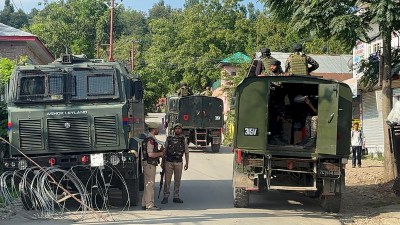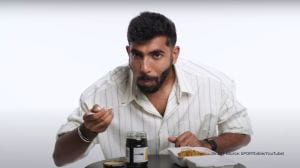Project Rise: Dawoodi Bohra community extends helping hand to fight malnutrition in Nandurbar
To overcome challences, including hesitancy and resistance, local residents who can communicate effectively in their native dialects have been roped in. The project will be implemented by on-ground frontline workers, including anganwadi workers.
 The project to combat malnutrition in Nandurbar district will be implemented by on-ground frontline workers, including anganwadi workers. (Express Photo)
The project to combat malnutrition in Nandurbar district will be implemented by on-ground frontline workers, including anganwadi workers. (Express Photo) IN AN effort to combat malnutrition in the tribal-dominated Nandurbar district, which has the lowest Human Development Index ranking in Maharashtra, the Dawoodi Bohra community has initiated a project to offer nutritional support to more than 600 undernourished adolescents for a period of three years. Pregnant and lactating mothers in the region will also receive assistance.
The Indian Express had earlier reported about the challenging circumstances faced by tribal communities dealing with malnutrition and maternal health. Taking cognisance of the reports, the Dawoodi Bohra community, a global philanthropic organisation, in collaboration with the Association for Nutrition and Development Action (ANNADA), Nandurbar District Authorities, and the Integrated Child Development Services launched a programme — Project Rise.
The state tribal development department already provides nutritious food to pregnant, lactating women and young children in 16 tribal districts through the Amrut Aahar Yojana. However, as often seen, these provisions are insufficient to combat malnutrition among marginalised communities. Project Rise is set to offer additional nutritional support.
Alvin D’souza, programme head at ANNADA, explained that child undernutrition causes developmental problems, diseases, infections, and death. “We will use millet-based, protein-rich ready-to-eat meals, providing nearly one-third of a child’s recommended micro-nutrient intake. The beneficiaries under this project will receive three varieties of ready-to-eat food mixes based on sattu each month, out of five available options, including wheat, makai, soya, jowar and ragi.” He added, “Each 50 grams of the mix will provide approximately 230 kilo calories of energy and 4 grams of proteins to the child.”
To overcome challences, including hesitancy and resistance, local residents who can communicate effectively in their native dialects have been roped in. The project will be implemented by on-ground frontline workers, including anganwadi workers.
D’souza, who, in collaboration with the Dawoodi Bohra community, previously worked on combating malnutrition in Mumbai’s Govandi and Raigad, said, “On reading about the issues, we collaborated with district authorities, who provided us with the details of children to be included in the project. These children will receive support at 10 anganwadi centres for three years.”
The group will also educate pregnant and lactating mothers on breastfeeding and to monitor physical and cognitive development of children. Often, pregnant women in the region refrain from seeking prenatal and postnatal check-ups and essential medications, leading to complications.
Sharing an incident, D’souza said, “We’ve observed that tribal women avoid taking folic acid during pregnancy because they anticipate that it will darken the baby’s skin… our goal is to raise awareness and educate the mothers on this matter.”
The latest National Family Health Survey showed the state has a significant burden of child malnutrition, with less than 10 per cent of children under two years having access to an adequate diet.
“Although Maharashtra has shown gradual improvement in infant and child mortality rates over the years, much work is yet to be done to tackle malnutrition across urban slums and rural and tribal communities. And we’re hopeful that through this project we will be able to holistically provide an uplift to children, mothers and their families in Nandurbar,” said Huzaifa Haryanawala, Project Rise coordinator.












